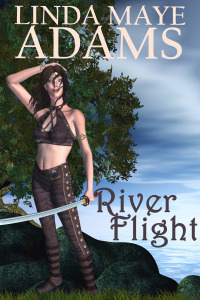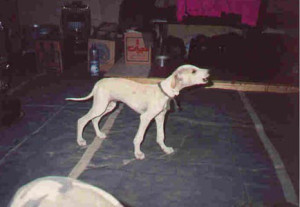Linda Maye Adams's Blog, page 98
May 14, 2015
Going Indie and the Teethpulling of Editing
One of my big sticking points about going indie was the editing. It’s not quite as easy it sounds to actually find an editor. Yet, it is essential because a book can’t be indie published without some form of editing.
The problem is that indie has opened a huge market for it, and specifically in one area: Developmental editing.
That’s when a writer sends their story to the editor and gets comments back on how to revise major elements in the story. If you hear someone say they spent thousands of dollars on editing, this is what they had done.
What I was looking for was copyediting.
That turned out be very hard to find.
I’d ask for recommendations for copyeditors, get a name, and then find out they did only developmental editing and proofreading.
I even went to a con, and there was an editor there, so I got his website and looked it up. I’d liked what he said at the con, but the site was another story – it was very clearly focused on pushing developmental editing onto the first time writer.
I think that’s one of the major issues of why it was so difficult to find an actual copyeditor. Everyone is focused on the first time writer, who needs a lot of help with the basics, and sometimes they forget that not everyone is beginner.
I also think there’s a lot of focus on the fear that many writers have – that they’ll get bad review because the story isn’t perfect. Newsflash – not everyone is going to like a story. It’s just the way it is, and it’s out of the control of the writer.
Anyway, I found the following things that became flags when I checked out an editor:
Offered developmental editing but no copyediting. This is kind of like saying, “We’ll tell you how to revise, but the small things are your problem.”
Overselling the developmental editing. This said that I was going to be pressured to upgrade to developmental editing.
Website under construction. This is always a bad thing to see, but worse for a business that is supposed to be about the details.
Too expensive for services. One had a starting point of $150 for short stories. I have 35 short stories of varying lengths, so the math is rather horrifying.
Too inexpensive. There were two places where I kind of felt like they weren’t going spend any effort on the copyediting because they charged too little.
I did have a price range that I was thinking of, and also an understanding of exactly what I wanted. I’d taken a class on editing, which wound up being helpful here. The class had us do exercises on editing – some of it was really hard! But it also gave me more knowledge than simply reading a description of the different levels.
Particularly, it helped me with deciding on the ones that were too expensive and too inexpensive.
Anyway, story #2 is in for a copyedit. Cover is below.
Filed under: Thoughts








May 11, 2015
Stuff and the Army
This post was inspired by comments on moving when I lived in the barracks. There always seemed to be the assumption that somehow we all lived like monks who had taken a vow of poverty. In fact one of the biggest impressions that barracks life left me was that where I was living was always considered “temporary.”
I lived in the barracks for six years. Hardly temporary.
I think some of this comes from World War II military. Despite the fact that WWII was over 70 years ago, it’s still very much a part of our culture.
We have a local insurance company that uses a cartoon general. WWII fatigues, steel pot helmet, and five stars (a rank that no longer exists). And Beatle Bailey, which has the same type of uniform, the fat sergeant (who would be kicked out today), and the bay barracks.
So it seems like the imprint WWII made on our culture also impacted the military’s own image of soldiers living in the barracks.
Then, the soldiers would have been temporary, drafted for the war. Once they finished their hitch, they would go back to civilian life. It makes sense that everything was temporary.
But it’s seventy + years, and the world’s changed a lot. What were the soldiers supposed to do once they got off work at 5:00? Eat dinner, come back, and clean up the barracks and go to bed every night?
For six years?
So there was always that disconnect. The sergeants sometimes forgot that we did have lives outside of the military. No one thought hat we might want a place we spent a lot of time in to look halfway decent and not like a place to park for the night.
Filed under: Military Tagged: Army, Barracks, Fort Lewis, World War II








May 10, 2015
The Sea Listens – Story Available
My fantasy short story, “The Sea Listens” is available on Smashwords:
On leave from the Army, Meredith Talmadge struggles with answers to why her uncle walked into the sea. What drew him to a beach rumored to be haunted? What did he hear in the voices that ride the fog, voices that Meredith herself can hear? Now those voices call to Meredith, and what they seek will change her forever …
Filed under: Thoughts








May 6, 2015
The Scariness of Going Indie
These last two weeks, I’ve been working on getting a short story ready to publish via indie. The story is called “The Sea Listens,” a contemporary fantasy.
I’ve also spent the last four months saying I was going to go indie and never quite getting going. I know there are people out there who type “The End” on their manuscript and throw the story up immediately, without even proofreading, and expect it to turn into an instant best seller.
Me? I felt like I’m going to screw it up all up.
So I’ve been stuck — procrastinating by writing!
My muse finally rebelled on me over the last month, and put her furry feet down (because she looks like a Golden Retriever). Every story I tried to write, I got stuck.
And I started thinking that I needed to take the first step. Just do one thing, and try to pretend like I wasn’t going to screw the whole thing up.
That first thing became “Pick the first story.” This one was already edited, and it was one of the stories that disappeared when my hard drive crashed.
The cover was simple, but then I’ve done graphics. I just have to be careful not to get lost in looking at all the pretty pictures. The fact that I have a balance of credits helps keep me from going, “Ooh! Shiny!” and downloading all kinds of images. Just the ones I’m going to use.
Formatting was a little tricky, and that was just because I worried about getting it right. I know, I know. I can go back and update it if it’s not right.
The blurb was an interesting experience to write (okay, I know I’m weird here). I’ve certainly seen some dreadful examples of them, like where the author just pastes in text from the book or complains about how hard it is. I started with the character, because that’s what readers want to see.
I think it was just hard because I’ve spent most of my life being berated for making mistakes. I’m not detail-oriented, and I can easily miss a typo that jumps out at someone else. Instead of just saying, “Hey, you missed that,” I would get people treating it like I’d committed a mortal sin. I got into the habit of checking things three or four times over, and someone would still find something. It was very frustrating. I even had a boss accuse me of lying because I missed a typo, and I was just going, “Seriously? Why is this worth all this effort?”
It got to the point where I would cringe if I spotted a typo and think, “I should have been more careful. Why didn’t I catch that?” And I would apologize to the person I was doing it for, like I’d done something wrong.
But work’s been helping me shed that. There’s been so much of “make do with less” that I’m finding that a lot of people aren’t checking anything in the effort to push it through. The story’s up, and I’m off to think about what the next one that will go up will be.
Ooh, shiny … I get to look for more covers …
Filed under: Writing Tagged: Indie Publishing, Perfection, Short Stories, The Sea Listens








April 26, 2015
Moving, Military Style
Moving in the military is always messy and stressful. So much so that the military classifies it as one of the top stressors.
But that’s when the soldier had a family — a spouse, children. But for the single soldiers who lived in the barracks, we always had problems with the sergeants, who seemed to think all we had was two duffel bags.
Not the TV set, video player, computer, books …
Lots of books.
Fort Lewis kicked us out of our barracks on main post, to move to the old World War II “temporary” barracks on North Fort. That was six miles away.
Initially, all the men were moving, but the women’s barracks wasn’t ready. We hit a holiday weekend, and the women were told “Move now!” A hurricane hit Washington State that weekend. So I’m throwing stuff in the back of my Geo Metro, which was a roller skate of a car, as I get pelted by high winds and rain.
Drive up this winding, six mile road as the rain battered at my little car. Got to the new barracks, hauled out my stuff, made a mad dash inside, dropped the stuff off, and back for another trip.
The problem part of the move was my computer desk. It wasn’t a monster like the ones you can get today, but it had a hutch, so it wasn’t going to be fitting on my roller skate car. My squad leader had promised to come by with his truck, but he was a no show (boo! Boo!).
It was getting dark out, and I was trying to figure out what I was going to do about this desk. I was the last one in these barracks, and I was stuck. Then one of the other platoon sergeants stopped by to check the barracks, and he had a truck. Yay!
It was probably good that I was the last one there. We discovered that the orderly room had left behind the company guidon. The first sergeant would not have been happy if he discovered it Tuesday morning.
After that move, I couldn’t find anything for ages because of Army expectations versus moving expectations.
Unpacking is messy. The Army expected us to be inspection ready immediately.
Yup. Those two things didn’t work together. But somehow, it made sense to the military.
Filed under: Military Tagged: Barracks, Fort Lewis, Guidon, Washington State








April 22, 2015
Visualizing the Setting
A couple of writers and I were talking on a list serve about describing setting — in this case, having trouble getting it into the story. Right up my alley. One of the writers said she didn’t get a visual image of the setting, so she had a hard time even remembering to get it on the page.
Then there’s me. I’m visual spatial, which means I think in pictures. You’d think that would translate easily into describing setting …
Not so much.
My default, in fact, is to simply leave it all out. It’s in my head, and it doesn’t get on the page unless I make the effort to do it — sometimes a lot of effort.
It’s hard taking a picture and translating it into words.
Add to that I don’t do well with the details, or the telling details as it’s been described for writers. I see more of the big picture, and the details tend to fold themselves up into that. So the woods are the woods. I can see them, and I get the picture, but I lose the specifics. So putting down that the character walked through the woods or that everything was brown makes perfect sense to me because I’m getting the picture, but then everyone says I didn’t describe anything.
But I can see the picture — why wouldn’t it be simple describing the setting?
I have to stop and think “Details.” Then it’s “What details are important to this character?”
I don’t think in details, so I’m having to do two things, both of which are very hard:
Translate the details, which is sort of like translating French when I don’t speak the language.
Sort through the big picture and try to figure out what details are important.
And none of this is like a description exercise where the goal is to treat the setting as if we were looking at a picture. Just about as dull as no description. It’s not about simply writing down what I see, but trying to figure out what the character would notice.
But also, it’s not just describing the setting once and getting it out of the way. If the character stays in that setting, there is constantly new setting information being introduced (about every 500 words) because he is still interacting with that setting. So I’m constantly having to revisit and translate that picture into words, at least two to three times in every scene, and it has to shift because it obviously can’t be about the same thing.
Take this picture of the tulips blooming:
My default: Tulips were blooming at the side of the building.
Translation: Yellow and red tulips had started to bloom next to the building, soaking up a patch of warm sunshine. I wanted to lay down there with them and get some of that sunshine, against the warm, damp earth, and let the cool breeze carry everything else away. I also knew I wasn’t going to get that.
This is not something I can let go for later and do a placeholder that says DESCRIBE TULIPS. When I pulled the character into the description, it becomes a major piece of the scene that needs be in there. So it’s constant state of trying to translate the pictures for each scene.
Filed under: Writing Tagged: characterization, description, setting, Spring, Tulips, Visual Spatial, Washington DC








April 20, 2015
Dogs of Desert Storm – Photo
As the war started, this small dog wandered into our camp, and one of the women — my roommate from back in the barracks adopted him. She called him “Muttley.”
This was taken inside the women’s tent, so you can see what our living conditions were like. The floor was covered and taped down. In back and to the left a little are boxes of ubiquitous water bottles.
Filed under: History, Military, Photos Tagged: Desert Storm, Dogs, Tents








April 15, 2015
Keeping Track of What’s in the Novel
This topic’s prompted by a comment over at Dean Wesley Smith’s blog, where he is currently running a series on Writing into the Dark (not outlining). In the comments, we got to discussing character questionnaires and interviewing characters.
I don’t use either technique. I’ve looked at questionnaires and not been impressed, and character interviewing just seems to odd to me.
Or actually, it all seems like outlining to me. In this case, outlining the character.
Just like the story, I wouldn’t know anything about the character until I wrote the story. A character worksheet would force me to make decisions that I don’t know about yet.
Then there was the question, which was “But you keep track after you write, right?’ Like write down who the POV character is for a scene, what they were wearing, what happened in the scene. A story bible of sorts to refer to.
Nope. Not at all. I don’t keep track of anything as I’m writing.
I have a very good memory, which is a function of being visual spatial. I might write a scene, and as I write it, I’m mentally connecting it to another scene already in the story. It’s like I can see the direct connections, and all the connecting parts get into the new scene. I don’t have to refer back to summary of the scene to know what’s in it. I can generally even hop back and land within a couple of scenes of it because I can see where it is in my head.
I can have trouble remembering how to spell things. Usually I’ll hop back and look, but sometimes I just do a botched spelling and move on, for fixing later.
As for the character pieces, It’s the same thing. I remember reading about a writer who had to physically write down that her character had tea at exactly 8:00 in the morning every day or she’d get it wrong. I found that quite strange because once I connect to that character, it’s part of the landscape in my memory and comes into the story when it needs to.
When I’ve tried story bibles or variations of one, I end up stalling out on it. I think, “What should I write down?” and it seems stupid to write down the character’s name when I know what it is, and it seems stupid to write down that character’s favorite color is when I already know what it is. The result is that I spend a lot of time wondering what I should write down in a story bible and don’t write anything at all.
Going through my messed up electronic files, I found at least five instances of character name lists. I started them all, thinking I needed it to remember a character name, and then never used them at all and forgot they were there.
Filed under: Writing Tagged: Character worksheets, Outlining, Pantsers, Visual Spatial, Writing Novels















